Robert Stadler drapes furniture in patterned "invisibility cloaks" for MAK museum installation
Austrian designer Robert Stadler has concealed the furniture of a 19th-century house beneath fabrics that camouflage with the historic interior, but also feature distortions reminiscent of digital glitches (+ slideshow).
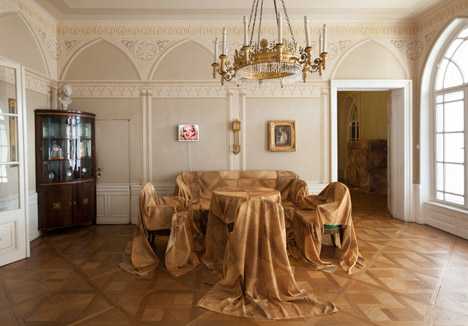
Robert Stadler was invited by the MAK museum in Vienna to develop an intervention as part of the its Design Salon exhibition series, which sees contemporary designers take over rooms in the Geymüllerschlössell, a merchant's summer house built in 1808.
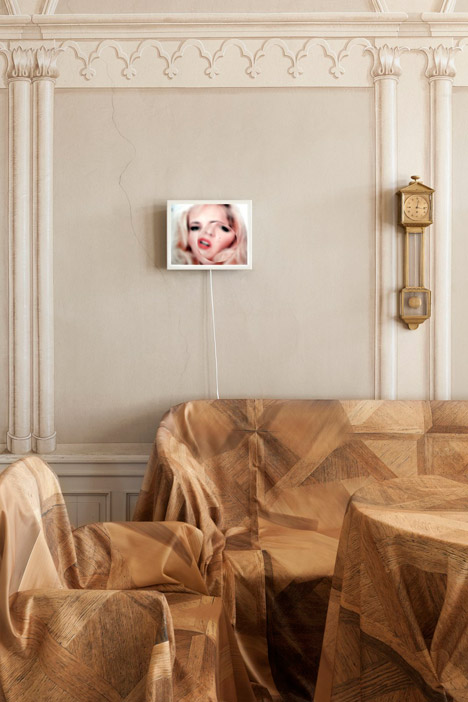
The designer titled the installation Back in 5 min, and aimed to create a juxtaposition between the original furnishings from the early 19th-century Biedermeier era and his own modern interventions.
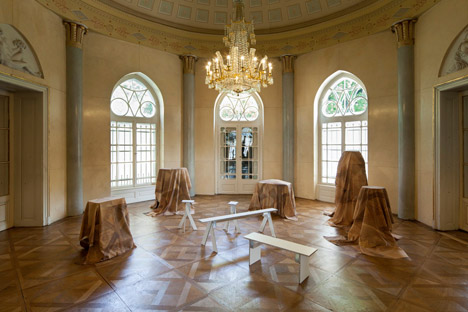
The Fantome fabrics developed in collaboration with Austrian textile company Backhausen feature patterns that can already be found on carpets, parquet and tiled floors throughout the rooms of the building.
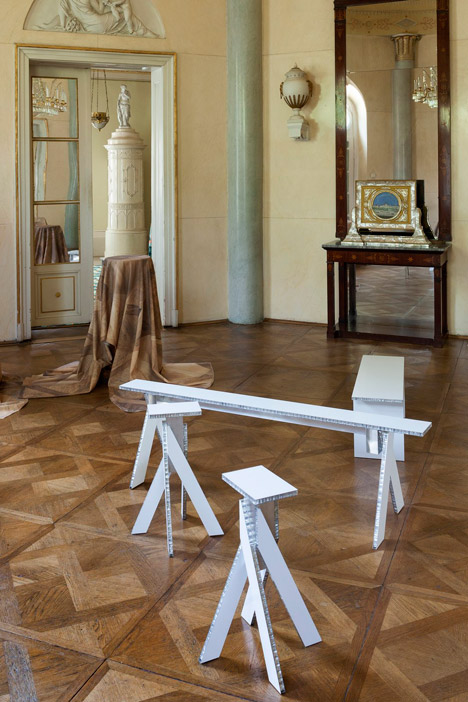
Designed to evoke magical invisibility cloaks from the worlds of fairytales, the throws match the background and disguise the items they are draped over.
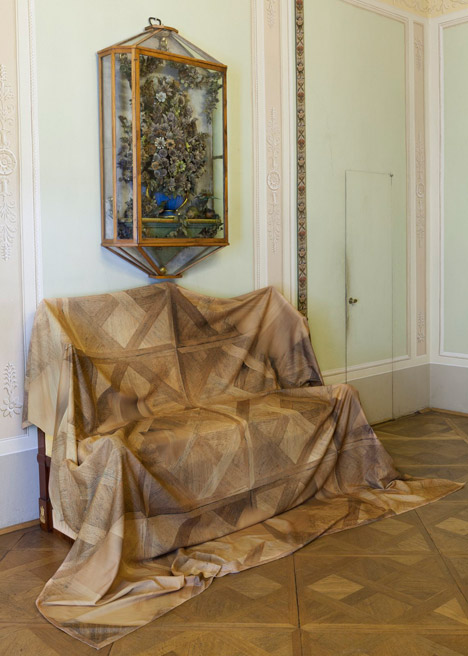
Each pattern is manipulated in places to represent the sorts of glitches that result from buffering online images or maps, introducing a temporal and geographical reference to the pieces.
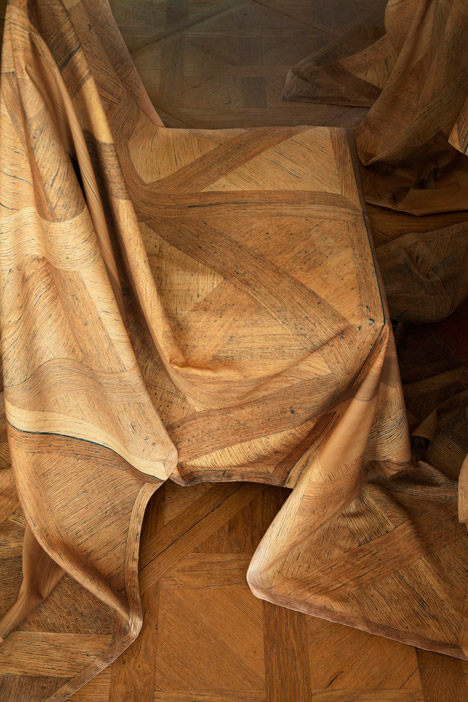
"Distortions can be discerned in the patterns, similar to what you see when you use Google Earth and an image hasn't finished loading," explained Stadler. "It results in a freeze effect, which addresses the endless period of absence in the currently unoccupied Geymüllerschlössel."
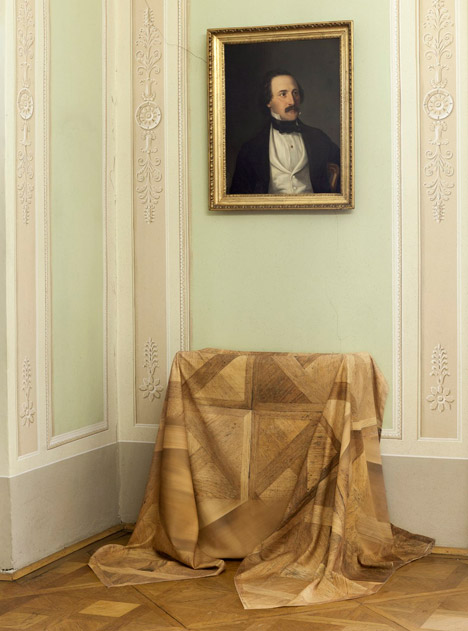
Stadler also created stools and benches with basic forms representative of rustic rural furniture, "whose multifunctional, reductive, and mobile design can be interpreted as a precursor to Biedermeier furniture," according to the designer.
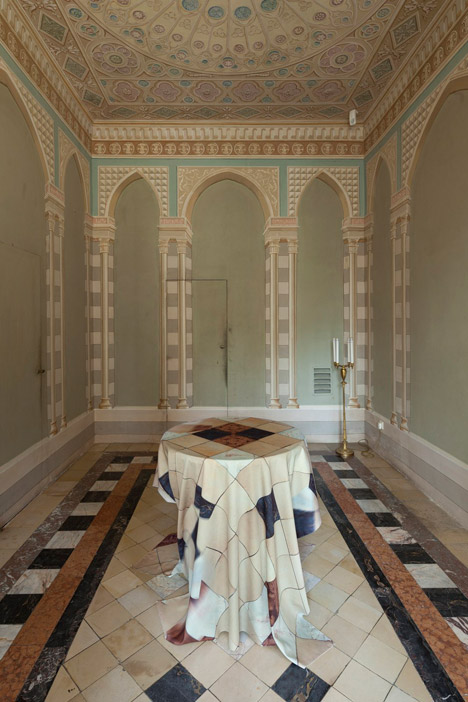
The furniture is made from aluminium honeycomb sandwich panels cut into simple shapes and fixed together around extruded aluminium profiles. The pieces are designed to evoke the sorts of timeless furniture that has been a feature of country living through many eras.
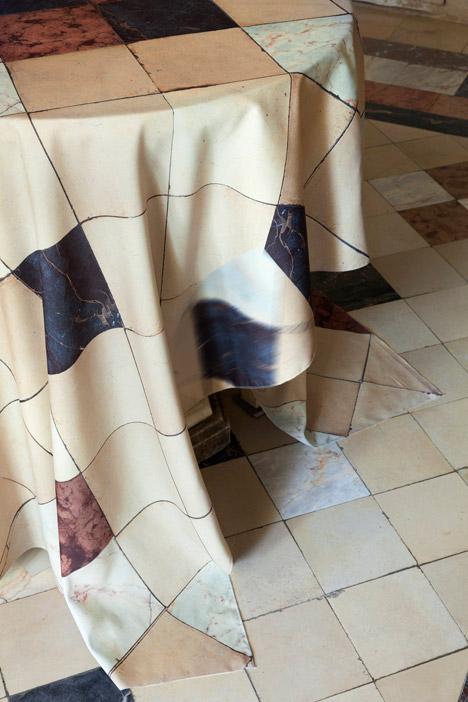
To complement a presentation of antique Viennese clocks known as the Franz Sobek Collection, Stadler installed two of the LCD clocks called 24h Linda and 24h Tanya that were produced between 2005-2008.

The digital artworks depict portraits of porn actresses that function as clocks. Two circles incorporating key facial features rotate to show the passing of time, with an eye marking the minutes and a mole signifying the hours.
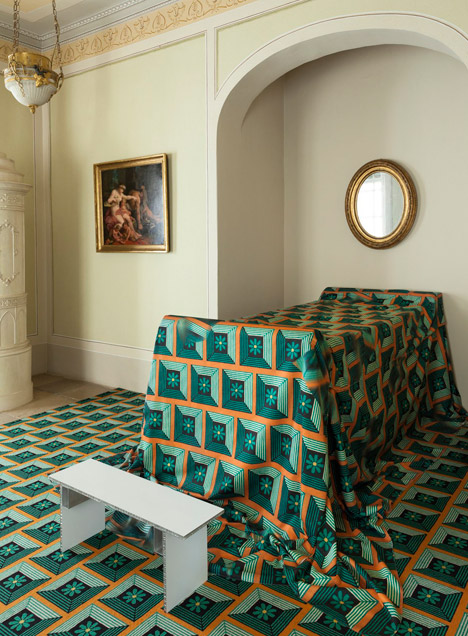
Two rooms within the house are illuminated by strobe lighting so the visitor can only catch glimpses of the interiors, as if viewing a peepshow. This adds to the installation's sense of temporariness – "as if the location were on the point of reconfiguring itself."
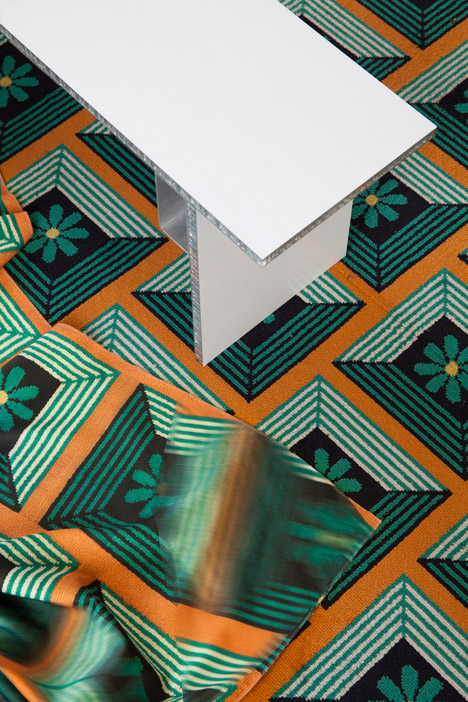
Back in 5 min is on show at the MAK Branch Geymüllerschlössel until 30 November 2014.
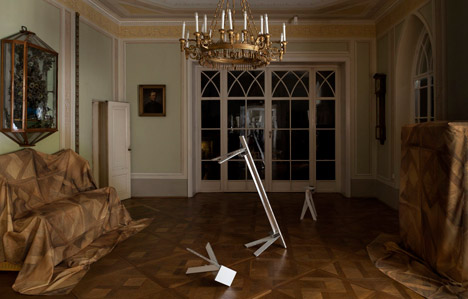
The previous designers that have developed interventions for the MAK Design Salon were Formafantasma in 2013 and Michael Anastassiades in 2012.